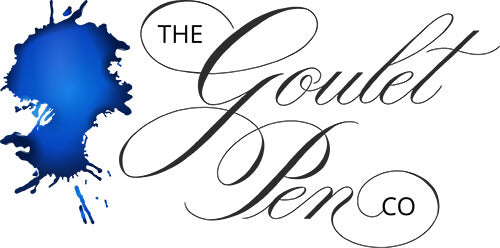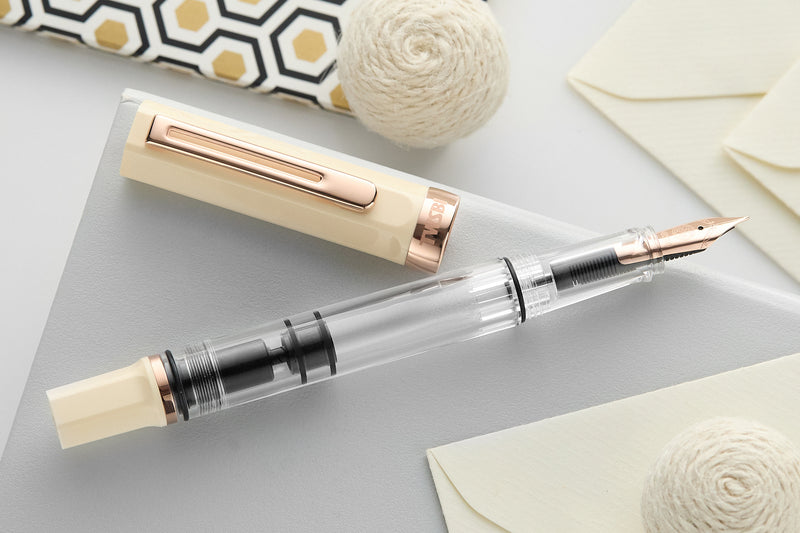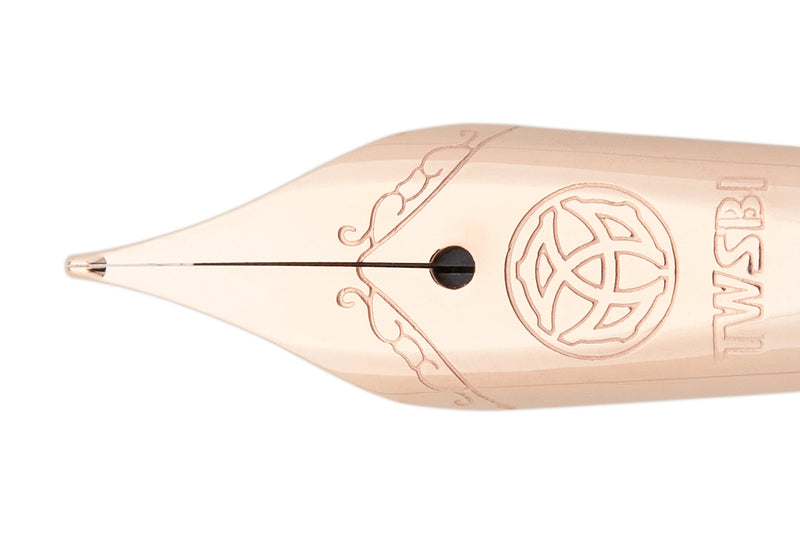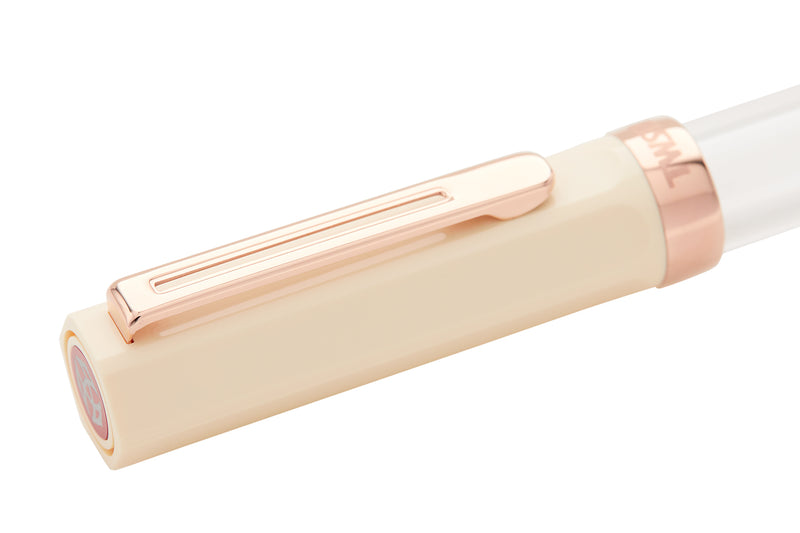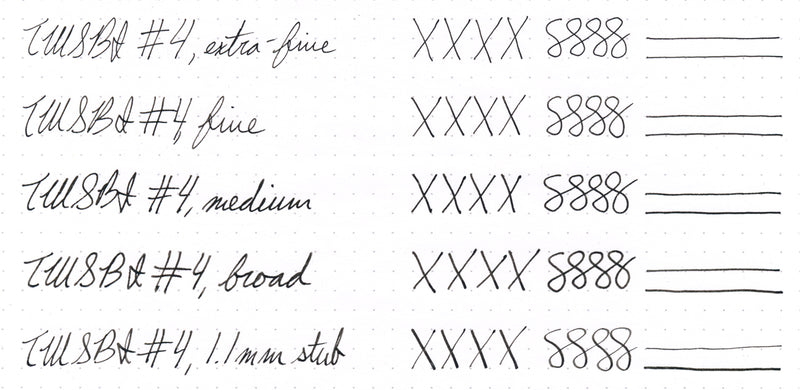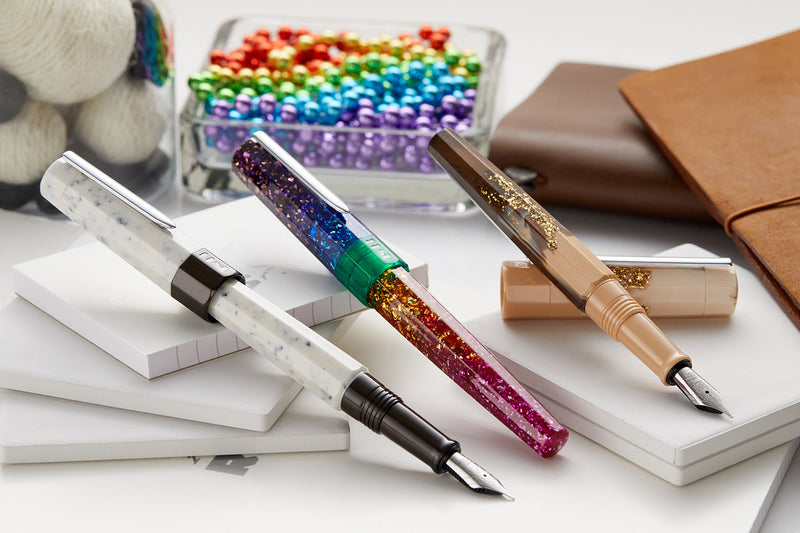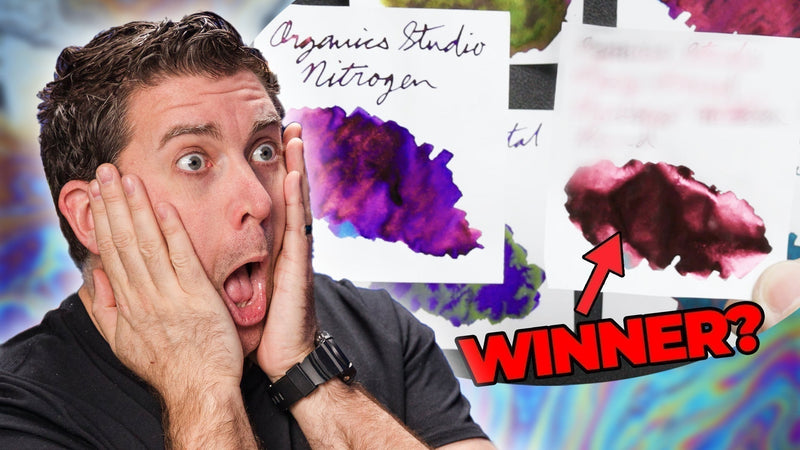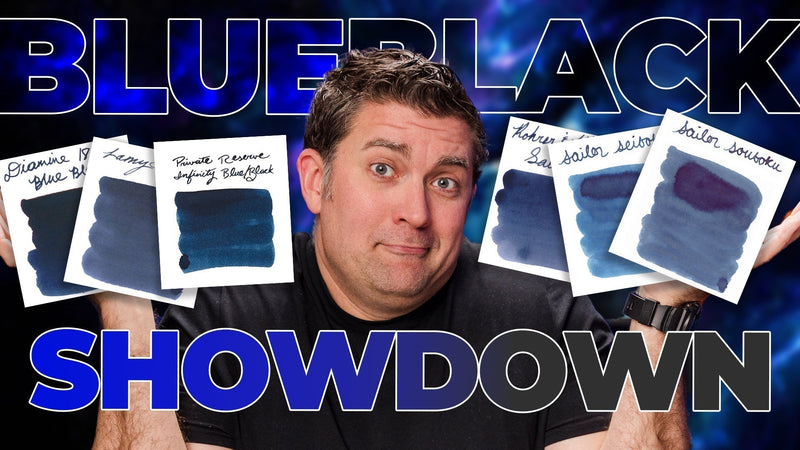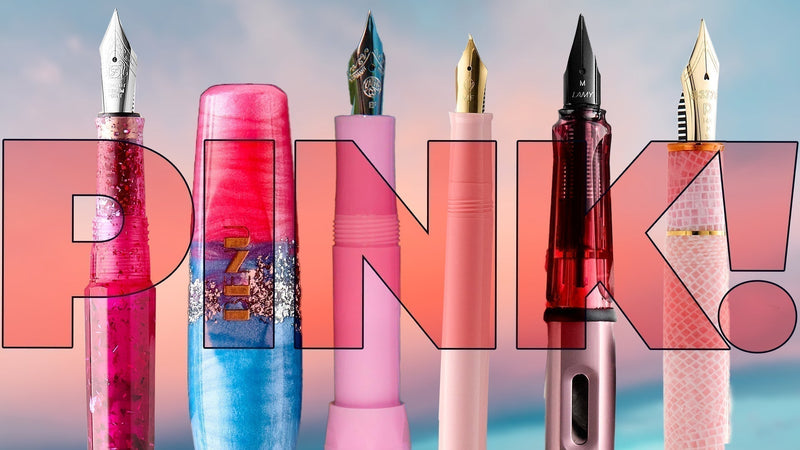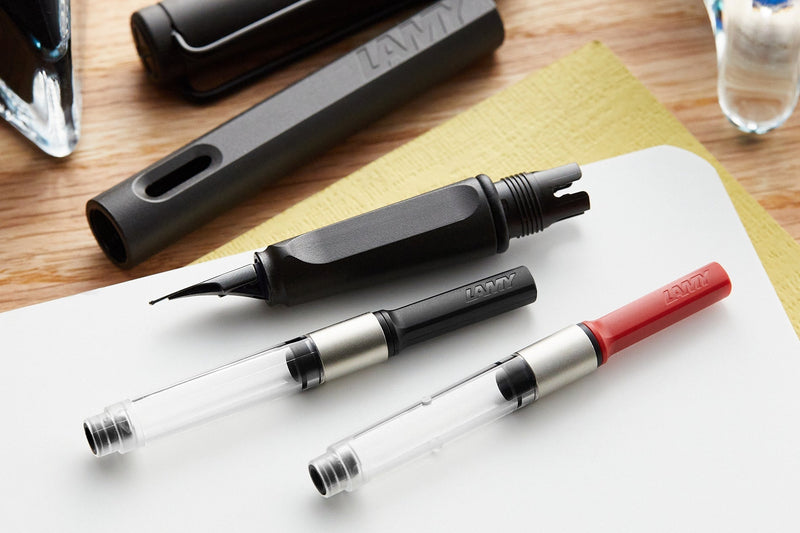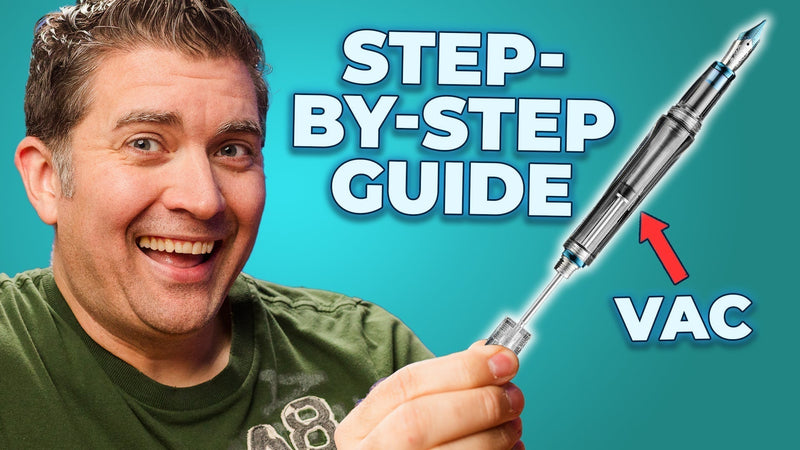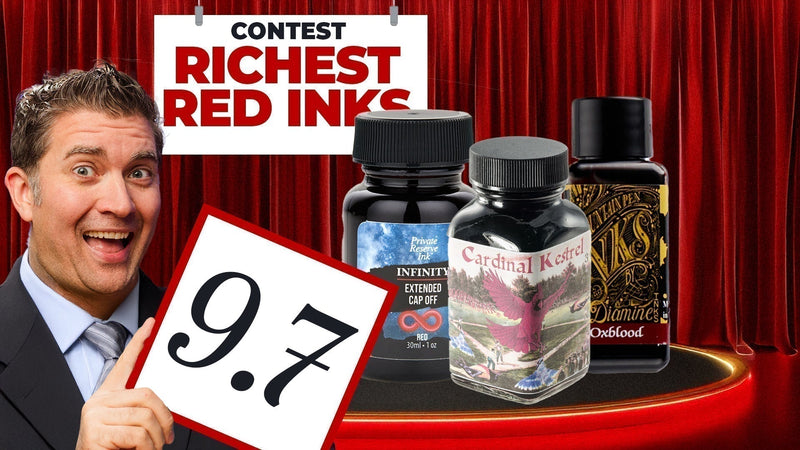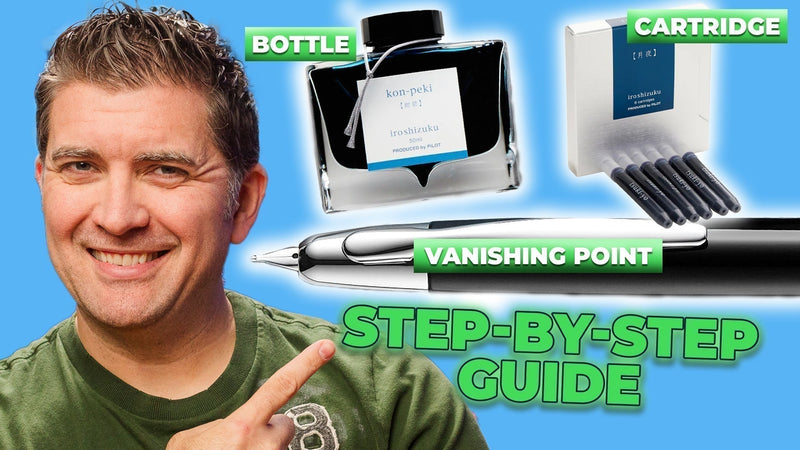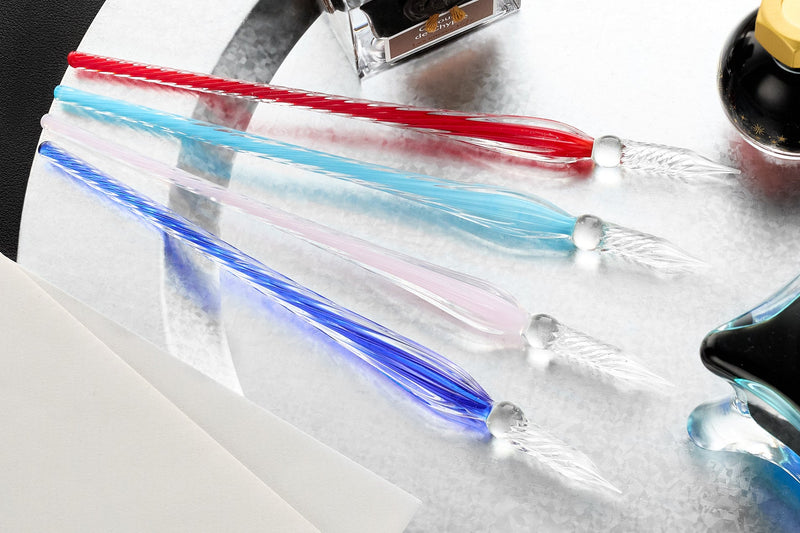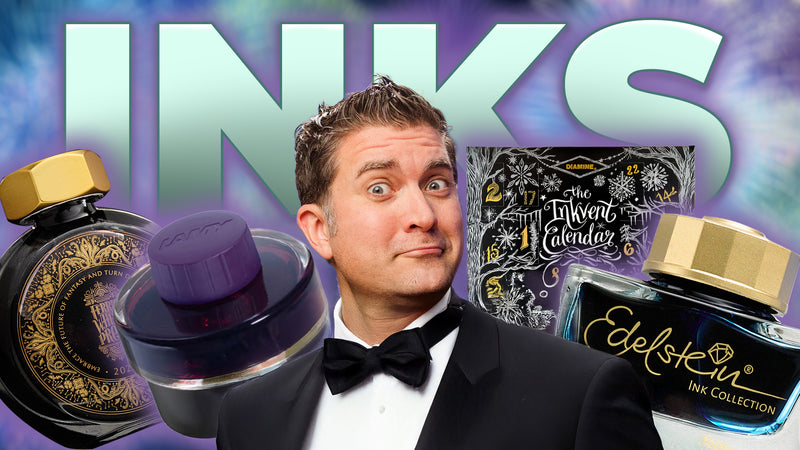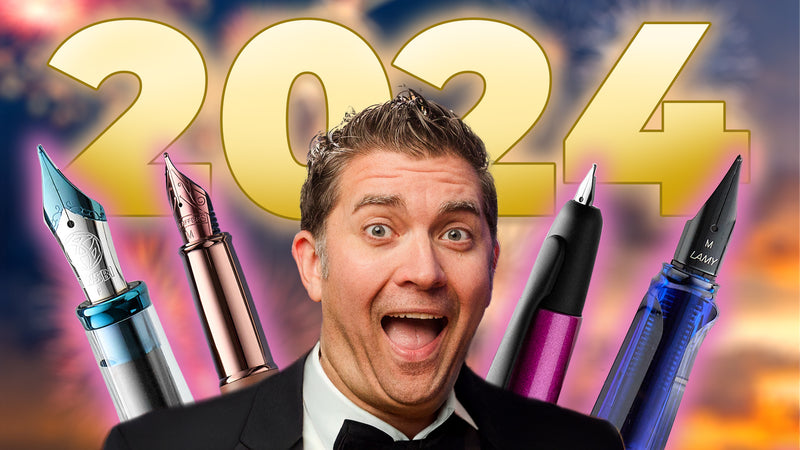TWSBI ECO Fountain Pen - Creme w/ RoseGold
TWSBI's belief is that it is important to allow the user to disassemble and reassemble the pen and completely experience the traditional aspects of owning and using a fountain pen. These pens also come packaged with a wrench and silicone grease. Neither of these accessories are intended to be used immediately, as they are for long-term care and maintenance. Additionally, please use extra care if you choose to disassemble the nib and feed, as the feed is very fragile.
- Condition
- New
- Brand
- TWSBI
- Type
- Fountain Pens
- Color
- White
- Demonstrator
Whether or not the barrel of the pen is translucent, allowing you to see the ink and filling mechanism inside.
- Yes
- Body Material
- Resin
- Cap Rotations
For pens with a screw-cap closure, how many rotations it takes to uncap/recap the pen.
- 1
- Cap Type
How the cap is opened/closed from the barrel of the pen. Some common options include Snap-Cap, Screw-Cap, Magnetic Cap, or Capless (no cap).
- Screw-cap
- Compatible inks & refills
Which ink this pen will accept. Choices include bottled ink and various styles of pre-filled ink cartridges.
- Bottled ink
- Filling Mechanism
How the pen fills with ink. Click here to watch our video tutorial on common filling mechanisms.
- Piston
- Grip Material
- Resin
- Nib Size
- Extra-Fine, Fine, Medium, Broad, 1.1mm Stub
- Nib Color
- Rose Gold
- Nib Material
- Steel
- Postable
Whether or not the cap fits securely onto the back of the barrel when open.
- Yes
- Retractable
Whether or not the nib/tip can retract into the body of the pen (usually for click or twist-open style pens).
- No
- Trim
- Rose Gold
- Diameter - Body
- 12.8mm (0.50in)
- Diameter - Cap (without clip)
- 14.9mm (0.59in)
- Diameter - Cap (with clip)
- 17.3mm (0.68in)
- Diameter - Grip (mm)
Measured from the place most people choose to rest their fingers, which varies with each pen.
- 9.1mm
- Length - Body
The measurement from the back end of the barrel to the tip of the nib.
- 131.6mm (5.18in)
- Length - Cap
- 60.4mm (2.38in)
- Length - Nib
The measured length of the visible portion of the nib when it is installed in the pen, from grip to tip.
- 18.5mm (0.73in)
- Length - Overall (Closed)
- 138.8mm (5.46in)
- Length - Overall (Posted)
When the cap of the pen is posted onto the back of the pen body, this is the measurement of the entire pen including the nib.
- 167.5mm (6.59in)
- Weight - Body
If a converter is included with the pen, this weight is reflected in the total.
- 13g (0.46oz)
- Weight - Cap
- 8g (0.28oz)
- Weight - Overall (g)
- 21.0g
- Max Ink Capacity - Piston Vac
The maximum volume of ink that can fit in the pen when using the built-in piston or vacuum filling mechanism.
- 1.76ml
